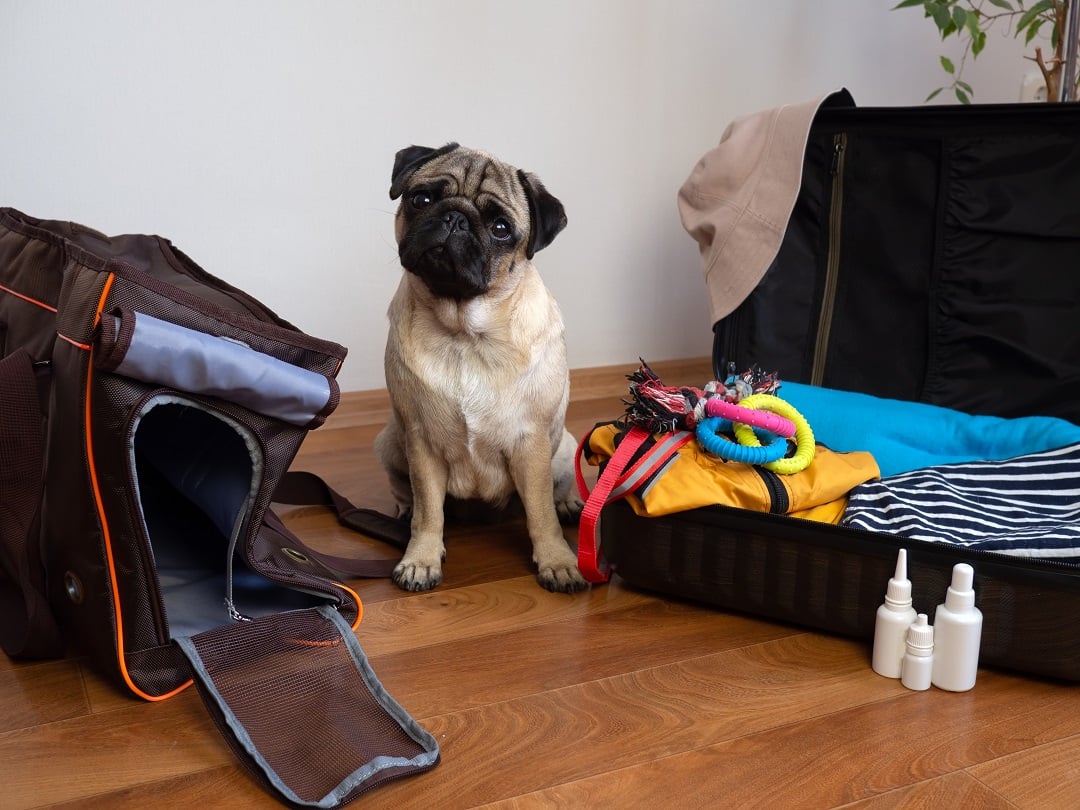
How to prepare your pets for disasters
Blog
With disasters becoming more frequently and severe, we need to be prepared—and our disaster plan should include our companion animals.
Climate change is affecting every aspect of our lives and causing more frequent and more powerful extreme weather events, including hurricanes, floods, wildfires, heatwaves, droughts, and more.
While we continue to work to fight climate change, it’s also important to be prepared for the worst. During times of uncertainty, it’s a relief to know you have everything needed to keep your entire family safe, pets included.
While we can’t know when tragedy will strike, we can always be prepared.
Here are some tips to make sure you and your family, including your companion animals, are prepared for any emergency:
1. Create a pet emergency kit
It’s important to put together a pet emergency kit to help keep your pets safe during any natural disaster or emergency. This should include items like:
- Food and water for at least 72-hours (The amount of each varies based on the animal type, so do your research!)
- Medications and any necessary medical records, including vaccination records
- Carrier and leash
- Pet first aid kit
- Bedding
- Their favourite toys for comfort during a stressful time
*Make sure to store this kit in an easy to access area near your pets so you are ready to grab and go at any moment. It’s also great to practice getting your pets in and out of the house quickly so they’re familiar with being transported and you feel more prepared.
Photo: Yekatseryna Netuk / Shutterstock
2. Ensure your pets have proper identification
Having proper identification is extremely important during an emergency. If you get separated, their identification may be the only way to find them. Discuss forms of permanent identification such as microchipping with your veterinarian and ensure their collars have up to date information on their ID tags with your correct contact information.
3. Make a plan for evacuation
When disaster strikes, you may need to evacuate your home quickly, and the best way to protect your pet in an emergency is to bring them with you. It’s important to identify a safe place where you can stay with your companion animals. Not all shelters accept pets, so it’s vital to create a list of potential places to go in case you need to evacuate. This can include:
- Family members and friends
- Veterinary clinics
- Animal shelters and boarding centres
- Hotels that accept animals
If advised to evacuate, try to bring your pet with you; they depend on you for their safety. If you must leave your pets in the house, do not tether or cage them. Instead, place a clear sign in the window and a note on the door indicating there are animals inside to help emergency responders rescue them.
4. Keep important documents handy
It’s a great idea to create and maintain a file for each pet of important documents including:
- Medical records and vaccination history
- Any insurance information
- Copies of any licenses
- Prescriptions
- Recent photos and detailed descriptions of their appearance
- Your emergency numbers and contact information for friends/family members
- Feeding schedules and behavioural quirks
Keep these records in a waterproof container and consider keeping copies online so they can easily be accessed anywhere and shared with others.
While paperwork may be the last thing you’re thinking about while evacuating in a hurry, these important documents could be crucial if you need access to veterinary care during an emergency or if you’re required to provide proof of vaccinations at a shelter.
Still not feeling prepared?
Download our emergency preparedness checklist to ensure you and your pets are ready for anything.
Protect your pet during an emergency
Get our checklist to help you make an emergency preparedness plan for your pet.
Banner photo: gfvtmear / Shutterstock

